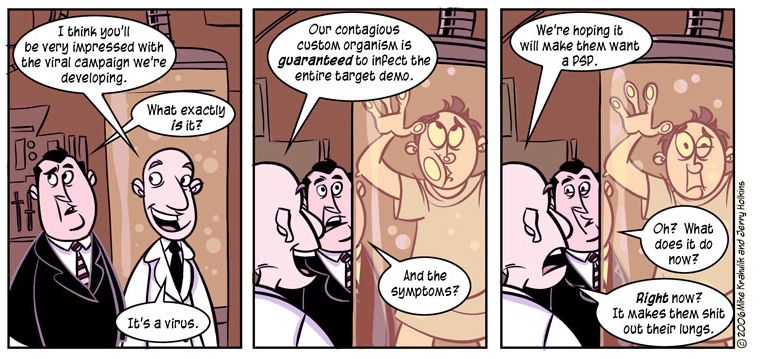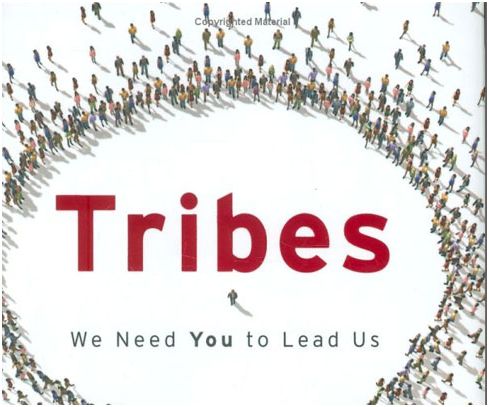“Viral marketing” – referred to as “online word-of-mouth marketing” – can be considered a buzzword in most organizations when it comes to e-marketing strategies, as many organizations want to launch a viral marketing campaign. However, few organizations are conducting state-of-the-art viral marketing campaigns and few of them are really aware of the myths surrounding this buzzword. In quest for some common myths around viral marketing campaigns, I recently read an article entitled: “The ten worst viral marketing campaigns”, which gave me an idea as to where some organizations fail to achieve their objectives. In this way, this post is an attempt to regroup 7 of the most common myths surrounding the viral marketing phenomenon.

1. Viral Marketing is Easy
Unfortunately for managers and fortunately for e-marketing consultants and agencies, viral marketing is anything but easy. As discussed by social networks guru Duncan Watts, for each successful viral marketing campaign, there are many that fail. However, to increase the chances that it actually works, the viral marketing strategy should be under the direction of e-marketing experts (unlike in the illustration at the top) and part of a well-defined online marketing plan. Frameworks such as the SOSTAC© framework, developed by consultant and best-selling author PR Smith, could be used. This framework consists of the following six components:
1. (S) Situation analysis: Where are we now?
2. (O) Objectives: Where do we want to be?
3. (S) Strategies: How do we get there?
4. (T) Tools: Which tactical tools do we use to implement strategy?
5. (A) Actions: Which action plans are required to implement strategy?
6. (C) Control: How do we manage the strategy process?
2. Viral Marketing Campaigns are Short-Term Strategies
Viral Marketing Campaigns should be short – generally a maximum of 3 months – sometimes 15 days are enough to spread the message. However, the duration of the campaign should not impact the horizon of the strategy. As one of the fundamental objectives of viral marketing campaigns is to gain a larger database, viral marketing campaigns should be considered as long-term strategies that should be used to attract new users and propagate awareness, to thereafter through other e-marketing strategies turn them into loyal users (consumers).
3. To start a Viral Marketing Campaign it Takes a High Number of Users
Many managers think that you need lots of users (reachable via their e-mail) as a baseline to spread the word. As in many aspects of life, quality is better than quantity. In this way, the first important question to ask is how many emails of users your organization has in its current database, and in relation to this, to what degree are those users involved. An organization is better off with a small number of users that will at least read the email sent to them, than with a high number of users where most of them won’t even open the email you sent. The second, less intuitive question to ask is to whom these people are connected. I agree the answer may be “I don’t know”. However, one of the worst kinds of database a company could have would be one where everyone in the database is connected to one another and has huge overlap in the people present in their social network. This kind of database is generally a sure failure for viral marketing. What is most needed is a small number of the “right” users, not necessarily the influencers, but more precisely the ones that are connected to these influencers and that are willing to positively propagate the information, a group that Seth Godin labelled the “hive”.
4. Viral Marketing Campaigns are only for Large Companies
It is equally possible to go viral for small companies than for international ones. Once again, the database is an important starting point. One other important component to take in consideration is the potential number of users the company could reach via this strategy. In this way, an organization of any size operating in a B2B perspective doesn’t really have a clear advantage of launching this type of campaign. Thus, the size of the organization doesn`t really matter, especially considering that small organizations with lower market shares have more to gain than the ones with high market share.
5. If the Product is Trendy Users Will Propagate
Even though it is proven that some products can be considered as trendier than others and more willing to propagate, if your online marketing plan is sloppy, and if the viral marketing campaign is not as trendy as the product, your chances of growth are quite diminished. In this way, propagation is not directly influenced by the product, it is influenced by the content of the campaign, which I agree can be influenced by the type of product. However, for the campaign to get viral it should either generate reactions such as “ah”, “oh”, “hahaha”, “wow” or “wack”, and/or imply strong incentives. Important questions that may arise may include: (1) is it worth my time to send it to a friend? (2) Will my friends think I am spamming them by sending them this message? (3) How would I react if my friend had sent me that message?
6. Viral Marketing Campaigns are Costless
Some organizations might think that viral marketing is costless and that all you need is: (1) a database, (2) good content and (3) a message (sometimes incorporating the content) that will be sent to many potential viewers. However, even though it is true that you can start a viral marketing campaign with these components, there can be big money involved there, since all in all, a viral marketing campaign is like an architectural project, costs are higher than predicted and are related to the quality.
As organizations may know, the sentence “build it and they will come” from the 1989 movie Field of Dreams doesn’t prove to be true in e-marketing. Thus, the propagation of a viral marketing campaign starts when users are becoming aware of the existence of the campaign. In this way, for users to become aware of the viral marketing campaign, what is first needed is to contact them. A problem that may arise as stated in the third point is a lack of quality of the database. This problem can be solved by buying a list of e-mails, for which the price of each thousand e-mails may vary between $100 and $250 depending on the agency and the specificity of the list. Furthermore, another way to spread the word is through advertising, but once again not at any cost. The procedure of using both viral and advertising for a campaign is labelled as seeding. And concerning the costs, what about the personalization of e-mails, and with which software? And most importantly, what is the content of the campaign? What are the incentives?
7. The Outcomes of Viral Marketing Campaigns are Hard to Measure
Overall the outcomes of a viral marketing campaign should not be hard to measure. Although it is trickier to measure the impact of a viral campaign when it propagates on other websites, something sure is that it is not hard to measure what is going on our organization website. As stated earlier, one of the objectives of a viral marketing campaign is to increase the number of users in our database, this would be a first metric. Other metrics can be used:
1. Number of unique visitors on the website dedicated to the campaign (awareness);
2. Number of purchases related to the campaign;
3. Computation of multichannel KPIs;
4. Positioning of the brand on the web through online marketing reputation engines.
In conclusion, these 7 myths are only some common examples of myths surrounding viral marketing campaigns. Many other myths could be added, any ideas?
Jean-Francois Belisle
